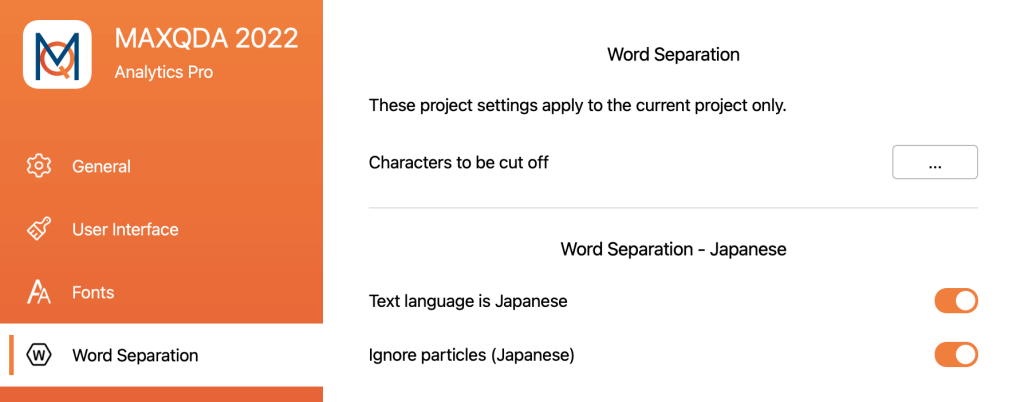The functions of MAXDictio are based on algorithms which are used to separate words by spaces or other separators. In syllable-based languages, e.g. Japanese, there are no spaces between words, therefore this way of differentiation is not possible.
MAXQDA can utilize the module MeCab: Yet Another Part-of-Speech and Morphological AnalyzerMeCab for Japanese word separation and for optionally ignoring Japanese particles. Particles do not have meaning themselves but are used to order a sentence and mark the relationships of the words in a sentence
To analyze a Japanese text with MAXQDA, go to Preferences > Word Separation and activate the options Text language is Japanese and optionally Ignore particles (Japanese)

It is recommended to use these options only if Japanese texts are currently being analyzed, because you might get wrong results for texts in other languages.
@ ! $ % & / ( ) = ? ^ ‘ ’ “ ” 「」 『 』 [ ]〔 〕〈 〉 < > 《 》 ≪ ≫ { }【 】 ¥ # + ― ー * _ : ;~ 。 . 、 ,
All functions of MAXDictio can be used for Japanese texts, except for the Whole word options available in the dictionary and in the dialog of Keyword-in-context function.
